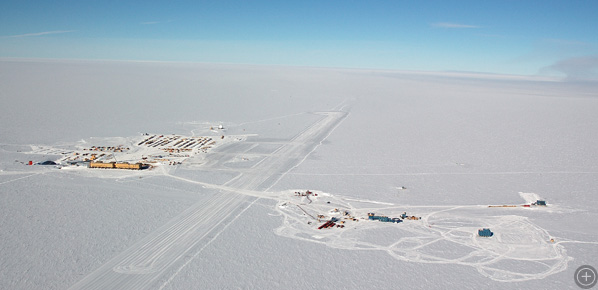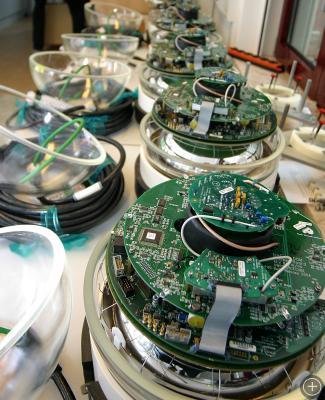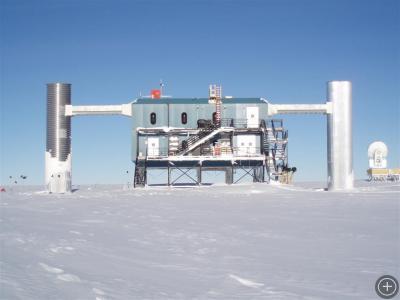
Using the world’s largest neutrino telescope, buried in the ice below the South Pole, to detect violent events in distant galaxies

An aerial view of the South Pole with the South Pole Station to the left of the runway and IceCube to the right.
The IceCube project is designed to detect high-energy neutrinos, particles created by the most violent events in the universe: black holes, gamma ray bursts, and supernovas. The detector serves as a deep-space telescope, allowing scientists to see impossibly distant cosmic events by detecting the neutrinos they generate.
IceCube consists of an array of ultrasensitive light detectors buried roughly a mile deep into the Antarctic ice sheet. To build it, researchers drill into the ice sheet with a hot water drill, then sink a vertical string of light detectors—think of an oversized string of Christmas lights—into the water-filled hole before it freezes over again.
Why put a neutrino detector under ice? The polar ice sheet supplies, naturally, the main ingredient needed for a neutrino detector: a large space that is totally dark and totally transparent.
Though neutrinos are zooming around us all the time—a million billion of them stream through your body each second—they can only be detected when they crash directly into the nucleus of an atom. The collision creates a faint glimmer of blue light, called Cherenkov radiation, which passes easily through the transparent ice to be “seen” by one or more of IceCube’s 4,800 light detectors. By tracking the path of these incoming neutrinos, scientists get an unprecedented view: a neutrino-based picture of the universe.





















